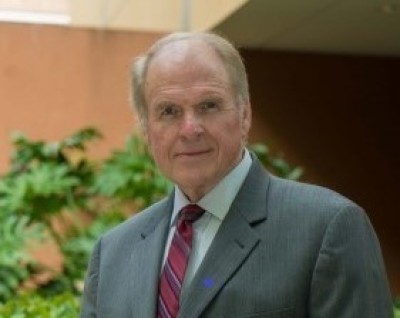Re-imagining America: So, this is what it looks like? (pt 1)
One day in the 1980s I drove along a frenetic Houston freeway listening to talk radio frenzy. Gabbers went over again and again how America Is changing for the worse.

I was coming from a meeting where I had watched an in-your-face media presentation about the way our civilization is collapsing. And I wondered: When will be the climactic moment of this change—or “re-imagining” as some call it now?
More important: What will the new nation look like?
Mark Steyn, in a recent speech at Hillsdale College, pondered the same question. To some extent he answered it in the title of his speech: “Our Increasingly Unrecognizable Civilization”.
Steyn recalled a starry-eyed commencement speech John Kerry gave on the graduation circuit years ago. The former Vietnam veteran, presidential candidate, senator, and secretary of state told the students: “You are going to be the first generation to live in a borderless world.”
And therein lie some of the causative factors of America’s identity crisis.
Borders are definitive, be they sexual and moral boundaries, political or national borders, or the great spiritual wall denoting good from evil. Even the line of our profile distinguishes us from others.
To paraphrase the Apostle Paul in his Second Letter to the Thessalonians, when the “restrainer” who establishes and sustains protective bulwarks is removed, lawlessness bursts in and wreaks havoc at its chaotic worst.
And so, the insanity of Portland, Minneapolis, Chicago, New York and other cities as mobs rampage while police departments are defunded, religion discredited, and voters keep electing the same people who build policy on the myth that the less restraint there is the better people will behave.
Intense change has been pressing in on America and the West for a long time. It starts out by degrees, then intensifies to what I called in one of my books, a “Globequake.”
One of the ways we mark the degrees of alteration in national identity is by contemplating the music of given eras.
Elvis became the image of change in America in the 1950s as the minstrel of the age. Back there in the pre-Elvis past was the big band music of the 1940s. Waiting behind the wall of the future were Peter, Paul, and Mary. And out there ahead of that trio was Bob Dylan, itching to tell us straight-out: “The Times, They Are A-Changin’.”
Bob Dylan was the hard-news guy, but Peter, Paul, and Mary were the romantic idealists... the dreamers who stirred us with the need to “re-imagine”—a word not part of the casual lingo of their time, but a buzzword now.
In the fullness of time came John Lennon, who put the “imagine”-word and concept right under our ears with his song, “Imagine.”
There he beckoned us to imagine a world of no heaven, hell, countries, religion, or possessions, among other things.
However, as we approached the 21st century I wondered if the “times” would continue to be ‘a-changin’, or would our nation and civilization reach the end toward which all those changes were moving us, like the Niagara River inevitably carrying everything to and over the Falls.
What would the “re-imagined” country look like? Everything Lennon wanted to get rid of constitutes a vital boundary. Unless there is some restraint, Lennon’s world would be in a state of perma-chaos—a hellish anti-civilization characterized by antinomianism, a hatred of law.
In fact, Jesus had long ago prophesied that the end-times would be characterized by the “increase” of lawlessness. (Matthew 24:12)
The Bible’s prophetic and historic passages reveal that the fundamental struggle in the fallen world is between chaos and cosmos.
Chaos is the goal of Lucifer. Its aim is de-creation, taking apart what God has put together. Critical Race Theory and similar exercises of the Woke movement show that dividing ethnic races and other categories of humanity constitute a major ploy in the fragmentation of human beings, separating people from God, themselves, and one another. Chaos is rending disorder, the ugly snarl of evil.
Cosmos is God’s order. But it is not the harsh mandate handed down by a cruel despot, or constricting legalism. Rather, as Romans 14:17 describes it, cosmos is the order of righteousness and justice, peace, and Spirit-given joy. It is the order manifested in the fruit of the Spirit: love, joy, peace, patience, kindness, goodness, faithfulness, gentleness, self-control. (Galatians 5:20-23).
Such beauty compels British Prime Minister Boris Johnson to call Christianity “a superb ethical system,” and to lament that he considers himself “as a kind of very very bad Christian.”
So how does the “re-imagined” America look after the rejection of this “superb ethical system” by elite establishments, and decades of manipulation, titillation, experimentation, and alteration?
Chaotic, that’s how.
“It is always hard to see the purpose in wilderness wanderings until after they are over,” wrote John Bunyan, author of Pilgrim’s Progress.
So, the big question now is this: “Is the ‘end’ near... or has the journey at least reached a point from which we can look back and see the whole of where we have been and a glance at the future towards which we are moving, and what we ought to do?
We will take a closer look at the nature of this chaos and its impact on us, our families, and institutions in Part II. In Part III we project what the future might hold, and, most important, the Bible’s guidance for us “pilgrims” (apologies to John Bunyan).
Wallace B. Henley’s fifty-year career has spanned newspaper journalism, government in both White House and Congress, the church, and academia. He is author or co-author of more than 20 books. He is a teaching pastor at Grace Church, the Woodlands, Texas.
For media inquiries, contact: ChristianPost@pinkston.co





























